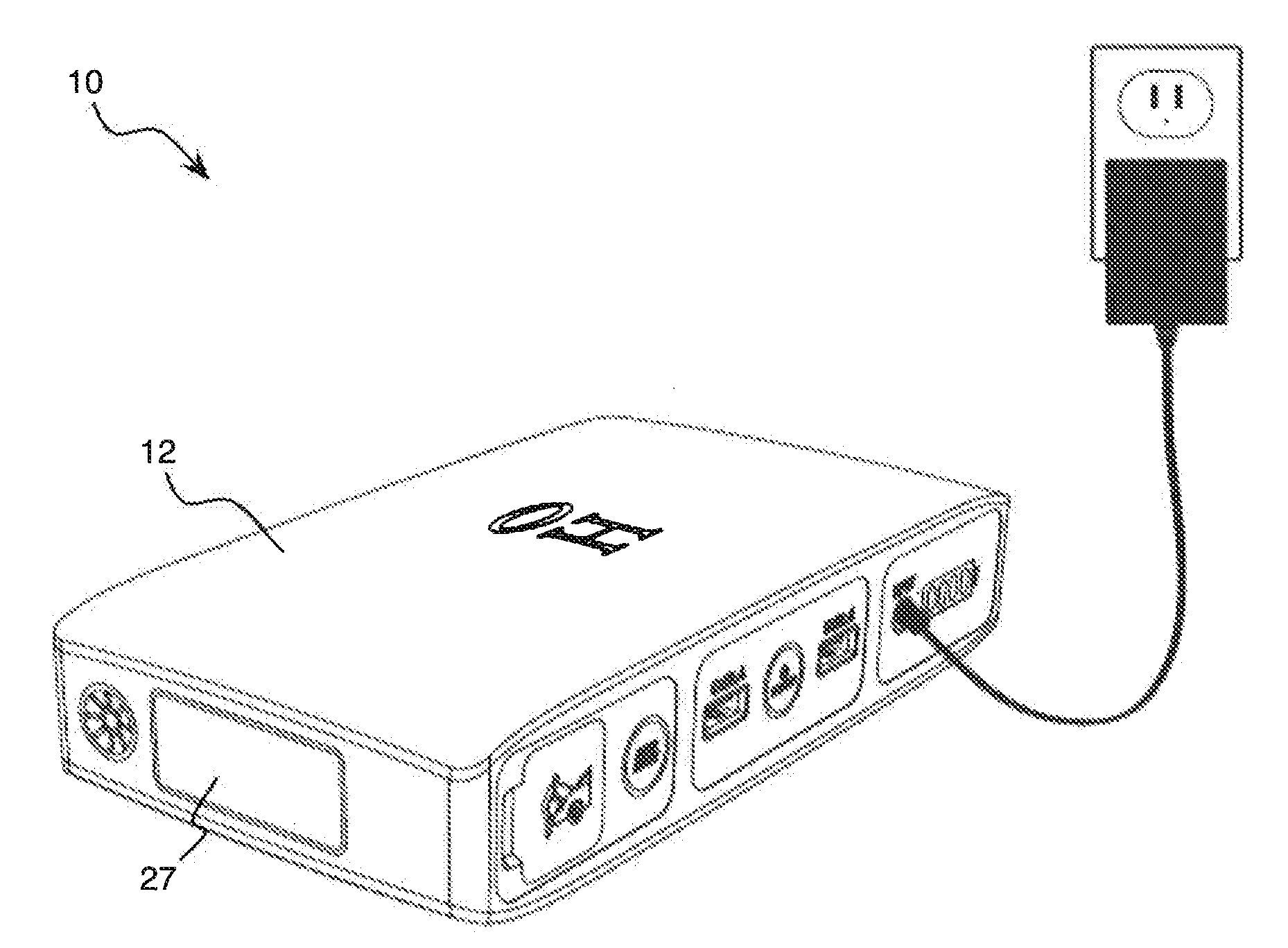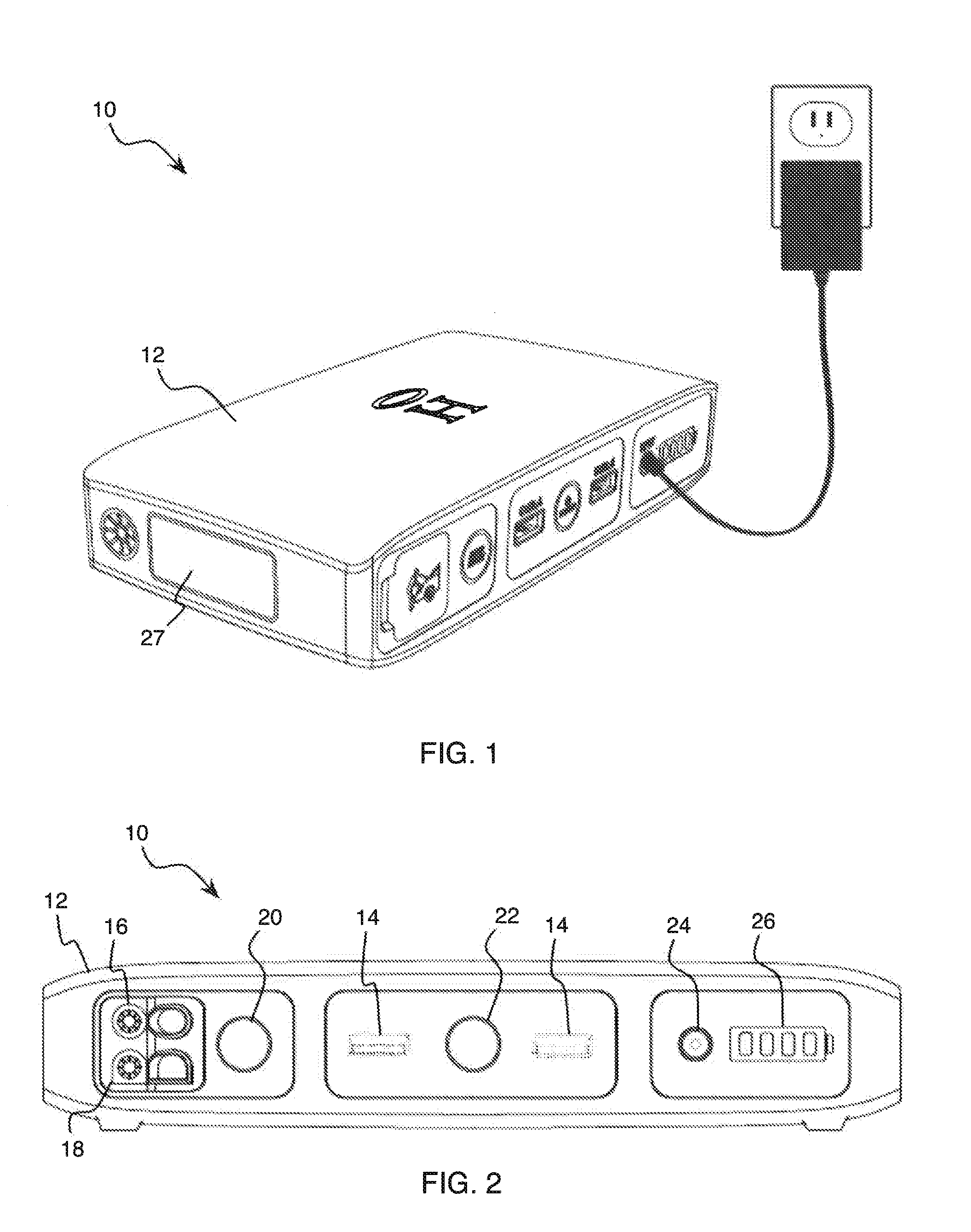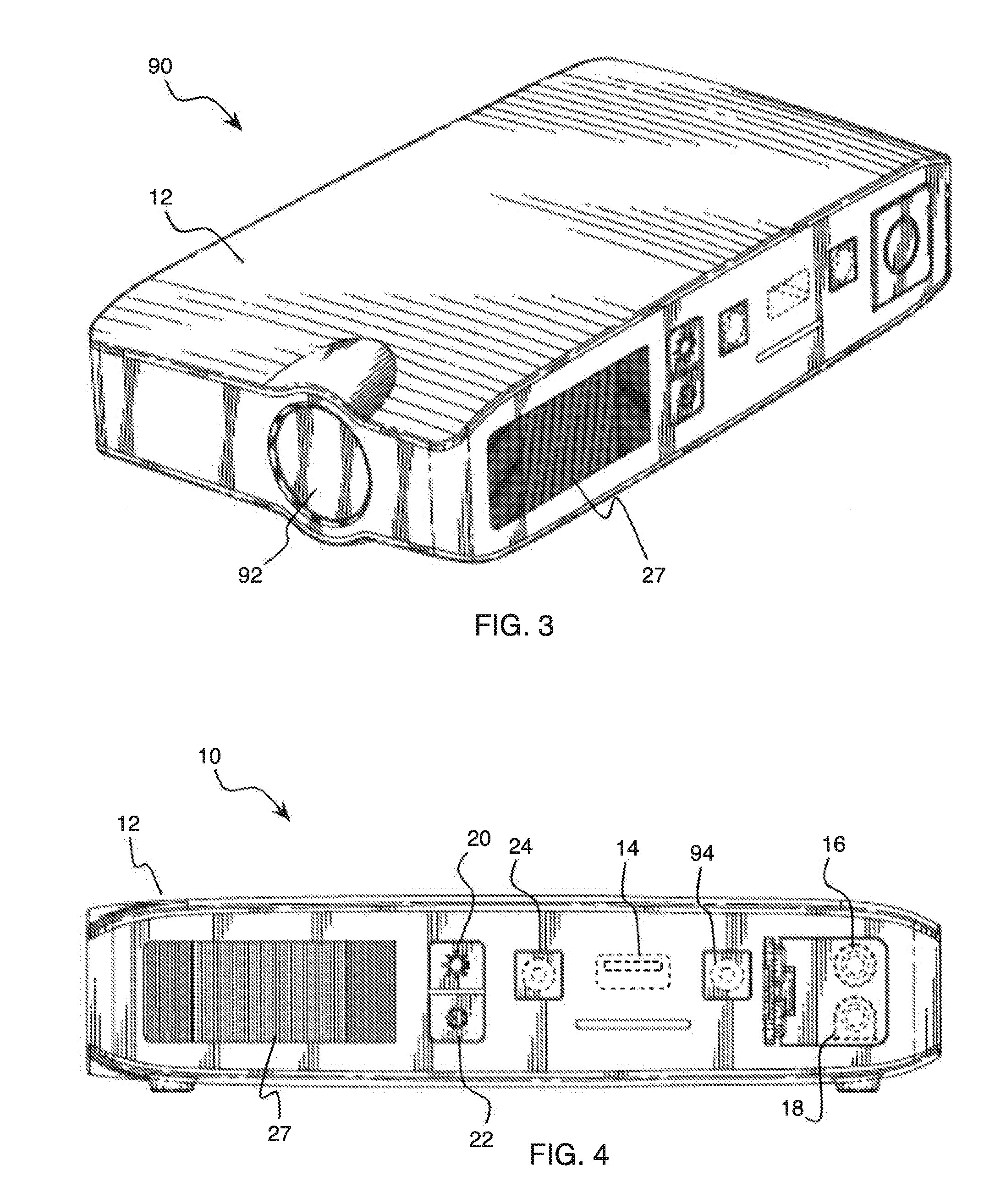Safety circuit for multi-function portable power charger
a multi-functional, portable technology, applied in safety/protection circuits, battery overheating protection, instruments, etc., can solve the problems of frequent recharging of devices, consumer may be without sufficient power to recharge phones, and devices require frequent recharging, etc., to achieve the effect of high power capacity and convenient portability
- Summary
- Abstract
- Description
- Claims
- Application Information
AI Technical Summary
Benefits of technology
Problems solved by technology
Method used
Image
Examples
Embodiment Construction
[0032]FIGS. 1 and 2 show a portable charger 10, which is capable of jump starting a 12V car battery as well as charging 5V portable electronic devices. The portable charger 10 comprises a case 12. At the outside of the case 12 is at least one 5 V USB output jack 14. Also at the outside of the case 12 are differently-shaped positive and negative 12 V jumper cable jacks 16, 18, a jump start button 20, a power button 22, a 19 V DC charging jack 24, battery level indicator LEDs 26, and a lamp 27 (e.g., an LED or fluorescent lamp). Referring to FIGS. 3-4, in another embodiment a portable charger 90 includes a second lamp 92 (e.g., LED or fluorescent) as well as a DC output jack 94. Other components of the portable charger 90 are similarly numbered to, and similar to, those described with reference to FIGS. 1-2.
[0033]FIG. 5 shows an exploded assembly view of the portable charger 10. Inside the case 12, the portable charger 10 houses a charger battery 30 (e.g., a lithium ion type battery),...
PUM
 Login to View More
Login to View More Abstract
Description
Claims
Application Information
 Login to View More
Login to View More - R&D
- Intellectual Property
- Life Sciences
- Materials
- Tech Scout
- Unparalleled Data Quality
- Higher Quality Content
- 60% Fewer Hallucinations
Browse by: Latest US Patents, China's latest patents, Technical Efficacy Thesaurus, Application Domain, Technology Topic, Popular Technical Reports.
© 2025 PatSnap. All rights reserved.Legal|Privacy policy|Modern Slavery Act Transparency Statement|Sitemap|About US| Contact US: help@patsnap.com



